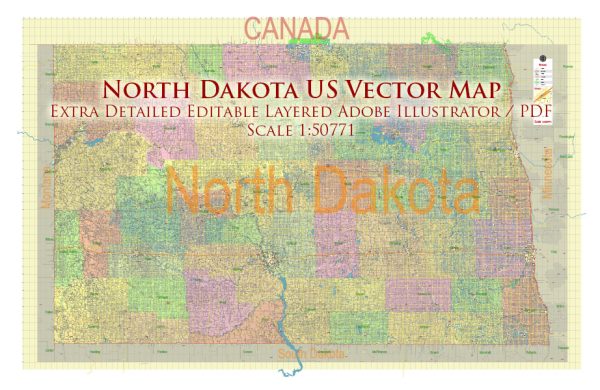North Dakota has a unique history of urban development characterized by a combination of factors such as natural resources, transportation networks, agricultural practices, and population trends. While the state is often associated with its rural and agricultural identity, it has experienced urban growth and development in specific regions.
- Early Settlement and Agriculture:
- The initial settlement in North Dakota was driven by agricultural opportunities. Homesteaders arrived in the late 19th and early 20th centuries, establishing farms and communities.
- Towns and cities began to emerge along railroad lines and rivers, serving as transportation hubs for agricultural products.
- Railroads and Transportation:
- The expansion of the railroad played a crucial role in shaping urban development. Towns often sprang up along railroad routes, facilitating the movement of goods and people.
- Cities like Fargo and Bismarck owe much of their early growth to their strategic locations along major transportation corridors.
- Oil Boom and Economic Shifts:
- In recent decades, North Dakota experienced an oil boom, particularly in the Bakken Formation. This led to the rapid growth of cities like Williston and Dickinson as they became central to oil extraction and production.
- The economic landscape shifted with the energy industry’s prominence, impacting both urban and rural areas.
- Economic Diversification:
- While agriculture remains a vital part of North Dakota’s economy, efforts have been made to diversify. This has led to the growth of industries such as technology, healthcare, and education in urban centers.
- Cities like Grand Forks and Fargo have become regional hubs for education and healthcare services.
- Cultural and Educational Centers:
- Urban areas in North Dakota are often cultural and educational centers. Cities house museums, theaters, and educational institutions contributing to the overall cultural development.
- The presence of universities like North Dakota State University in Fargo has a significant impact on the urban landscape, attracting a diverse population.
- Population Trends:
- North Dakota’s population has seen fluctuations over the years, with rural-to-urban migration occurring during periods of economic growth.
- Urban areas have seen steady population increases, with a concentration of residents seeking economic opportunities, education, and cultural amenities.
- Infrastructure and Planning:
- Urban development in North Dakota involves careful planning to accommodate growth while preserving the state’s natural beauty. Cities work on infrastructure projects to enhance connectivity, public services, and quality of life.
- Urban planning also addresses challenges such as the impact of severe weather conditions on infrastructure.
In summary, North Dakota’s urban development is shaped by its historical reliance on agriculture, the influence of transportation networks, economic shifts such as the oil boom, efforts at economic diversification, and the cultural and educational significance of its urban centers. The state continues to evolve, balancing growth with the preservation of its unique identity and natural resources.


 Author: Kirill Shrayber, Ph.D.
Author: Kirill Shrayber, Ph.D.